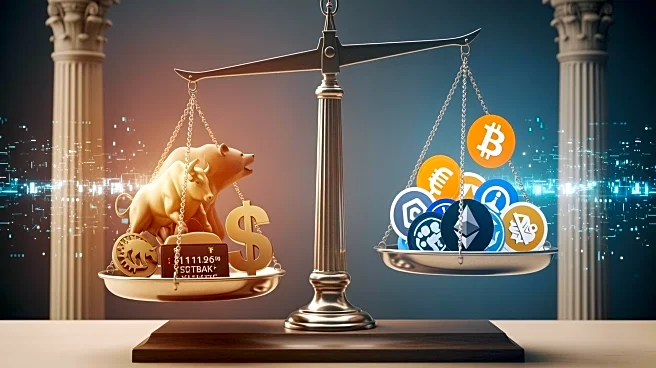What's Happening?
The U.S. Supreme Court's 1946 ruling in SEC v. Howey is currently influencing the regulation of digital token networks, leading to inconsistent outcomes. The Howey test defines a security as an investment
in a common enterprise with expected profits from others' efforts. However, this static rule does not account for the dynamic nature of digital assets, which often evolve from fundraising tools to decentralized networks. Recent court cases, such as SEC v. Ripple and SEC v. Terraform Labs, have shown varying interpretations of this test, causing confusion in the legal landscape. The SEC's stance has also shifted over time, with different chairs offering conflicting views on whether tokens like Ether are securities.
Why It's Important?
The ongoing debate over the application of the Howey test to digital assets has significant implications for the cryptocurrency industry. Inconsistent legal interpretations create compliance challenges for issuers, exchanges, and trading venues, potentially exposing them to criminal liability and financial penalties. The lack of clear regulations can hinder innovation and growth in the sector, as businesses struggle to navigate the uncertain legal environment. A more consistent and modern regulatory framework is needed to accommodate the unique characteristics of digital assets and provide clarity for stakeholders.
What's Next?
The Supreme Court or Congress may need to intervene to provide a durable rule for digital assets that evolve through decentralization. Potential solutions include clarifying the 'efforts of others' criterion in the Howey test or establishing decentralization metrics to guide securities regulations. Congress could also create safe harbors for early-stage transactions in tokens that have not yet reached a certain threshold of decentralization. These measures would help align legal doctrine with the realities of digital asset technology and support the industry's development.
Beyond the Headlines
The current regulatory uncertainty poses constitutional due-process challenges, particularly when criminal consequences are involved. The Supreme Court's decision in Loper Bright v. Raimondo, which limits agency interpretations of ambiguous statutes, further complicates the situation. A modern legal framework that reflects the lifecycle of digital assets is essential to ensure fair notice and compliance for industry participants.











